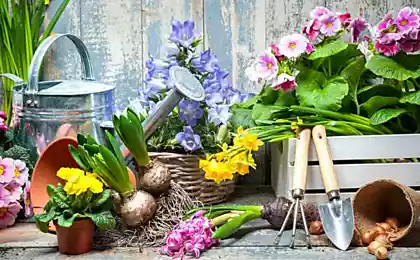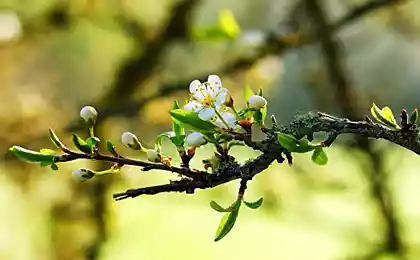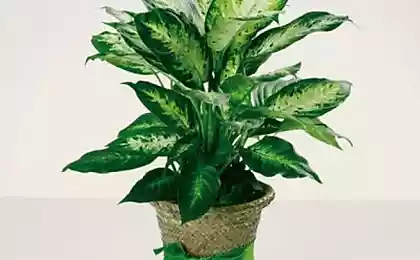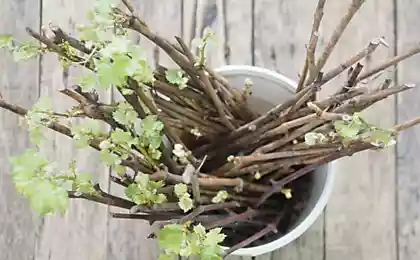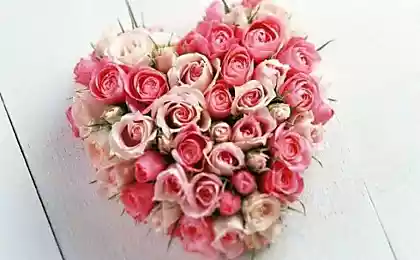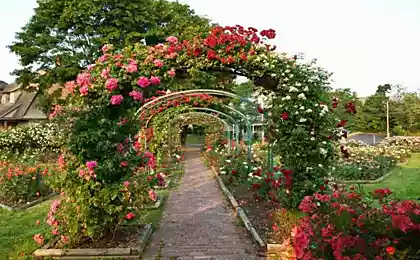496
Gooseberry: planting, propagating and treating
Red currants and black raspberries, blackberries, honeysuckle, gooseberries – all the familiar and beloved natives of the Russian gardens. Did you know that the first "domesticated" pit in Russia was the gooseberry? At the time of his universal reign on this well-known ad nauseam currants have never even heard of. Today, the gooseberry is an old-timer, thanks to new varieties is experiencing a second youth.
The first mention of gooseberry refer to the XI century. Then it was called bersen," or"bersen-kryzh". At the time it was transplanted from the forest edges, in monastery gardens and urban homesteads. Varieties no, of course not, but the "Northern grapes" with pleasure used in its natural form. Special popularity the Bush to the XV century. In the capital on the slopes of the Moskva river grew gardens with lush Berseneva (gooseberry) bushes. Since then, and the name stuck for one of the capital's embankments.
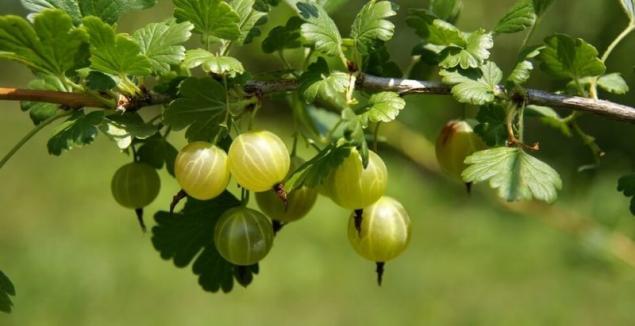
However, bersen came to taste not only our compatriots. In the nineteenth century, English breeders brought the first large-fruited varieties of gooseberries. And went his glory to walk through the world, soon to reach us.
Soon September is the best time for buying and planting bushes of new varieties. Gooseberries don't care. If you plant it in well dug and moderately fertile soil (ordinary garden filled with organic matter), to grow shrub will be good for several years, even without additional fertilizers. Dig a pit depth of not less than 40 cm and diameter 50 cm Distance between the bushes – not less than 1.2 meters. Make sure to provide him with a bright place in the garden. In the shadow of the harvest will be no sour. Also, don't plant gooseberries in the valley. Even short stagnation of groundwater devastating for him. If the site you are low, then put him on the mound. Drought shrub is well tolerated, but during the ripening fruits must be watered.
After fruiting, under the digging of soil around each Bush, make superphosphate (30-40 g) and potassium salt (20 g). Perekapyvayut carefully and deeply so as not to damage the superficial root system.
All we had with gooseberries well, but with the advent of new varieties from Europe leaked to us "overseas" mushroom disease – American powdery mildew (powdery mildew of the gooseberry). End first bred large-fruited varieties are suffering and current cultivars. The methods of struggle also came up a lot. Will help any approved fungicide.
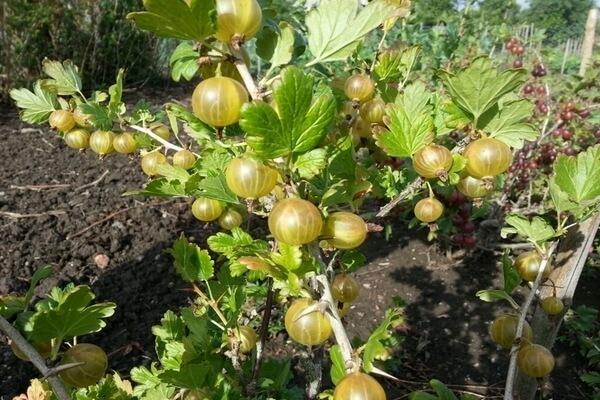
But we should not forget about the old "grandfather's" recipe. Take wood ash (approximately 1 kg) and mix it in a bucket of warm water. Place in the sun, occasionally stirring. After 5-7 days the drug will be ready. Carefully discard the solution, add some liquid soap (for adhesion) and spray the bushes. It is better to use a spray. Do not take the event time, meticulously handle all the leaves on both sides. The procedure is best done in the afternoon in dry weather. After the rain – again.
The same treatment does not hurt and as prophylaxis.
Reproductive argument
To propagate gooseberries easy. It is best to root cuttings. To do this, choose annual spring escape, it bends and is placed in the groove depth of 8-10 cm Bolt escape to earth, hill and water. By the end of the season from each kidney will grow shoots. The following spring, the clumps are separated from the parent plant.
But remains to escape, you can not only spring, but throughout the season. Gooseberries are also well rooted green and woody cuttings.
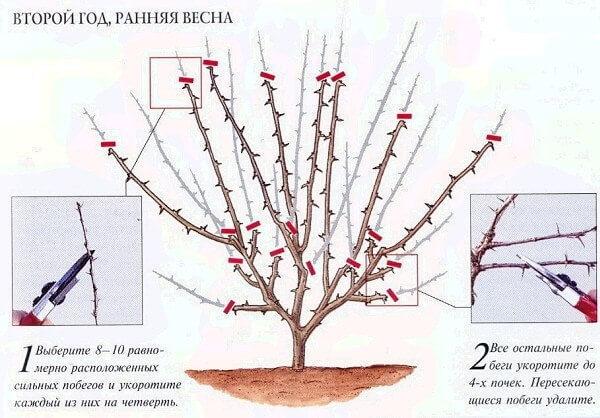
Harvest cuttings are best in September. And then store until spring in a cool basement. But you can just put now. Before planting the cuttings, cut a length of 15-18 cm Lower oblique cut under the Bud, the upper directly over the kidney. Well before planting, the lower part of the cuttings dipped in a solution of rooting stimulant. Will zaglubit the stalk, leaving the top not more than two kidneys. Make a substrate of sand, peat and garden soil (1:1:1). Plant sloping, well obamite the ground, pour. Cover the new film or the p/e capacity. Regular watering and spray.
Also interesting: the Rules for the care of the strawberry in July and August
How to transplant grape
Still possible to root green cuttings. Already this season, the cuttings can form young roots. And in the spring continue to grow.
In winter, cover cerenomy dry leaves.published
Source: vk.com/rodnaya_dacha?w=wall-92403104_13288
The first mention of gooseberry refer to the XI century. Then it was called bersen," or"bersen-kryzh". At the time it was transplanted from the forest edges, in monastery gardens and urban homesteads. Varieties no, of course not, but the "Northern grapes" with pleasure used in its natural form. Special popularity the Bush to the XV century. In the capital on the slopes of the Moskva river grew gardens with lush Berseneva (gooseberry) bushes. Since then, and the name stuck for one of the capital's embankments.

However, bersen came to taste not only our compatriots. In the nineteenth century, English breeders brought the first large-fruited varieties of gooseberries. And went his glory to walk through the world, soon to reach us.
Soon September is the best time for buying and planting bushes of new varieties. Gooseberries don't care. If you plant it in well dug and moderately fertile soil (ordinary garden filled with organic matter), to grow shrub will be good for several years, even without additional fertilizers. Dig a pit depth of not less than 40 cm and diameter 50 cm Distance between the bushes – not less than 1.2 meters. Make sure to provide him with a bright place in the garden. In the shadow of the harvest will be no sour. Also, don't plant gooseberries in the valley. Even short stagnation of groundwater devastating for him. If the site you are low, then put him on the mound. Drought shrub is well tolerated, but during the ripening fruits must be watered.
After fruiting, under the digging of soil around each Bush, make superphosphate (30-40 g) and potassium salt (20 g). Perekapyvayut carefully and deeply so as not to damage the superficial root system.
All we had with gooseberries well, but with the advent of new varieties from Europe leaked to us "overseas" mushroom disease – American powdery mildew (powdery mildew of the gooseberry). End first bred large-fruited varieties are suffering and current cultivars. The methods of struggle also came up a lot. Will help any approved fungicide.

But we should not forget about the old "grandfather's" recipe. Take wood ash (approximately 1 kg) and mix it in a bucket of warm water. Place in the sun, occasionally stirring. After 5-7 days the drug will be ready. Carefully discard the solution, add some liquid soap (for adhesion) and spray the bushes. It is better to use a spray. Do not take the event time, meticulously handle all the leaves on both sides. The procedure is best done in the afternoon in dry weather. After the rain – again.
The same treatment does not hurt and as prophylaxis.
Reproductive argument
To propagate gooseberries easy. It is best to root cuttings. To do this, choose annual spring escape, it bends and is placed in the groove depth of 8-10 cm Bolt escape to earth, hill and water. By the end of the season from each kidney will grow shoots. The following spring, the clumps are separated from the parent plant.
But remains to escape, you can not only spring, but throughout the season. Gooseberries are also well rooted green and woody cuttings.

Harvest cuttings are best in September. And then store until spring in a cool basement. But you can just put now. Before planting the cuttings, cut a length of 15-18 cm Lower oblique cut under the Bud, the upper directly over the kidney. Well before planting, the lower part of the cuttings dipped in a solution of rooting stimulant. Will zaglubit the stalk, leaving the top not more than two kidneys. Make a substrate of sand, peat and garden soil (1:1:1). Plant sloping, well obamite the ground, pour. Cover the new film or the p/e capacity. Regular watering and spray.
Also interesting: the Rules for the care of the strawberry in July and August
How to transplant grape
Still possible to root green cuttings. Already this season, the cuttings can form young roots. And in the spring continue to grow.
In winter, cover cerenomy dry leaves.published
Source: vk.com/rodnaya_dacha?w=wall-92403104_13288

